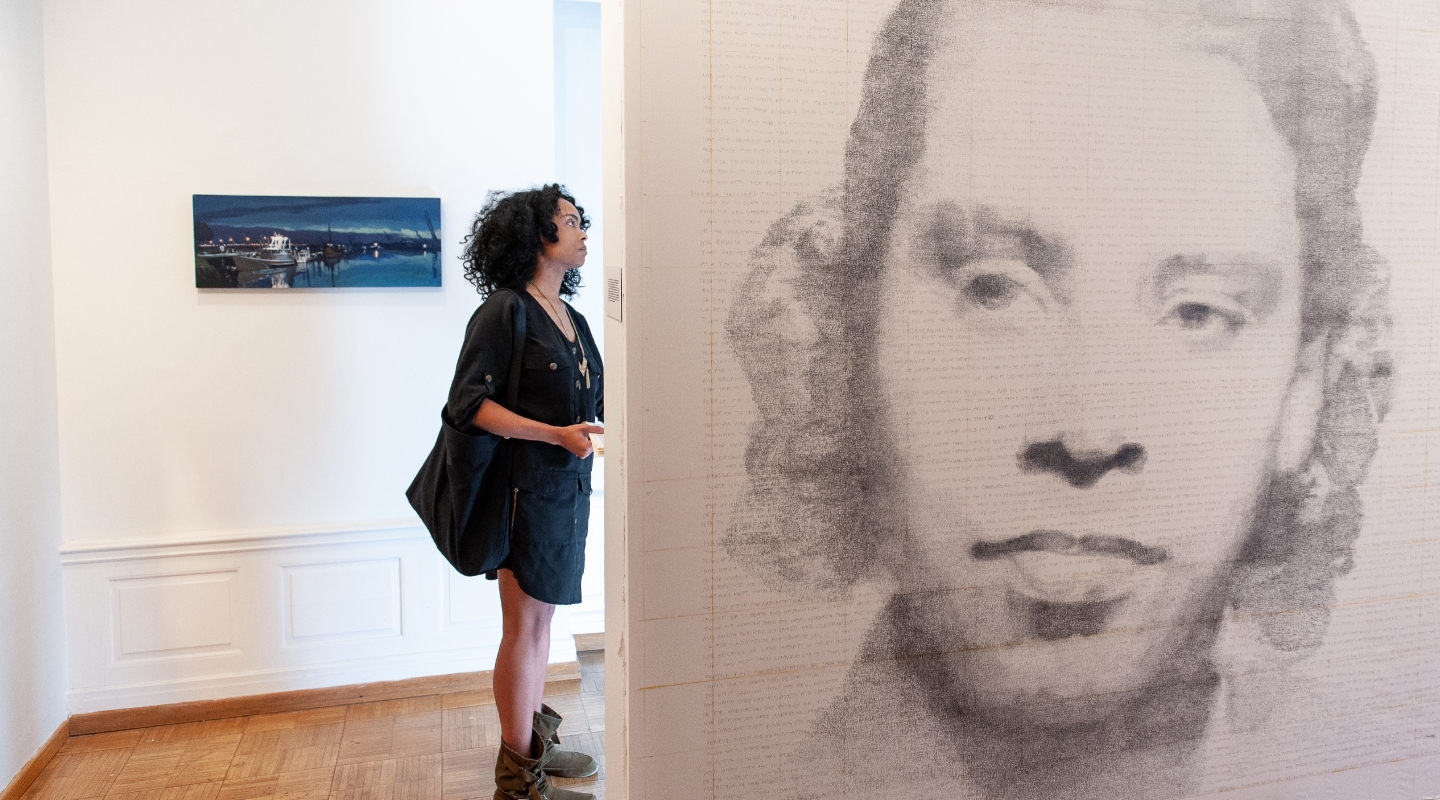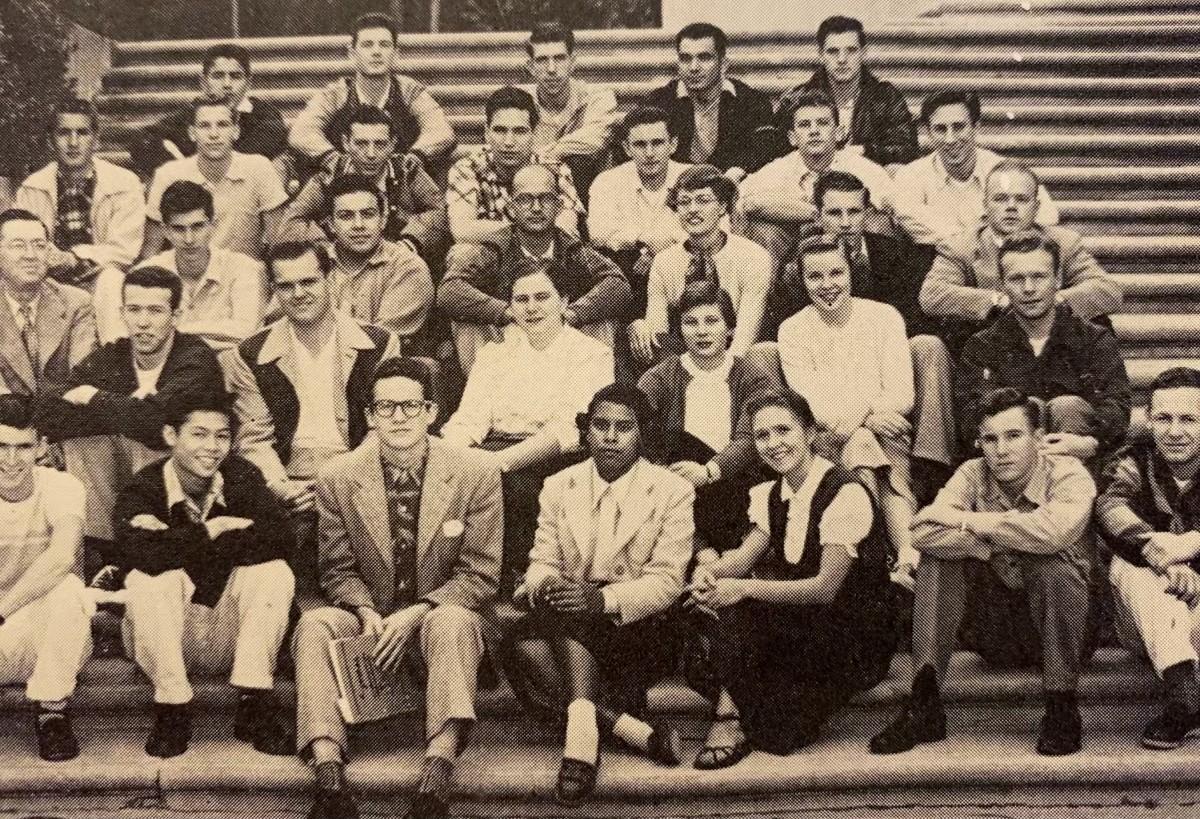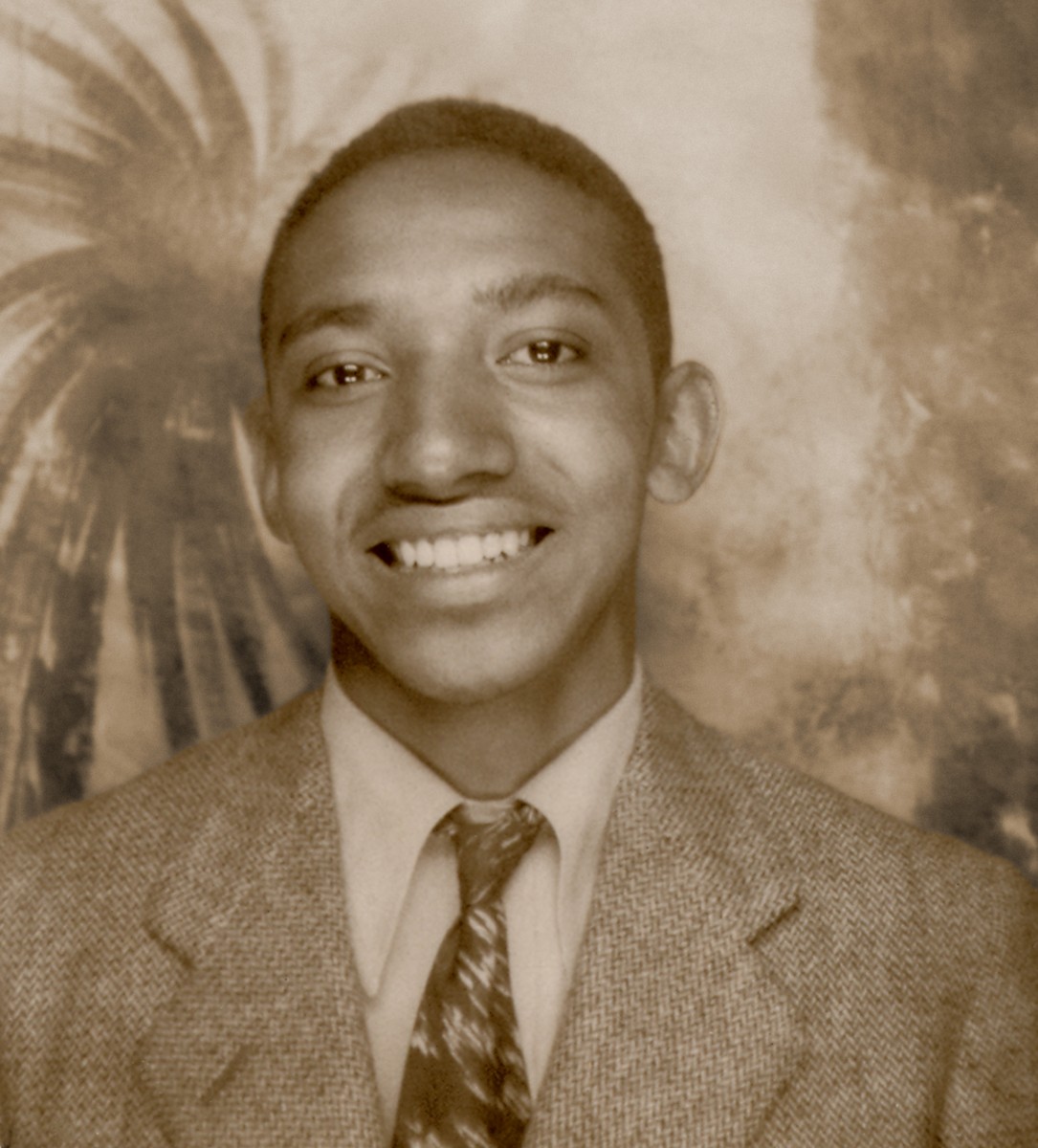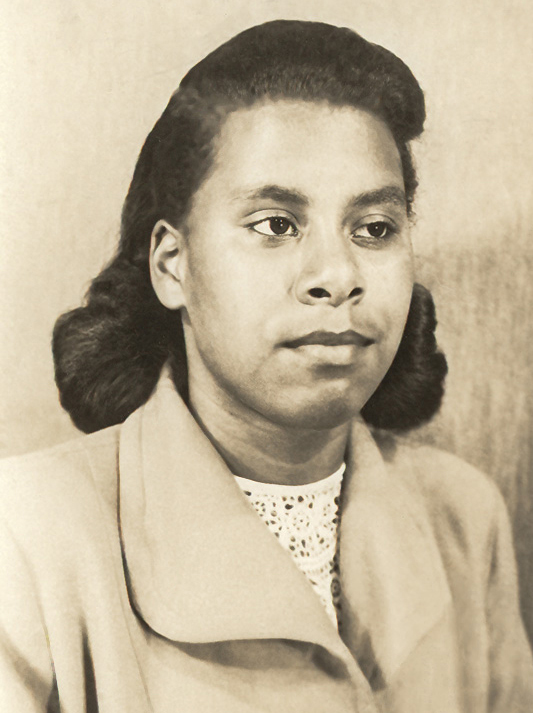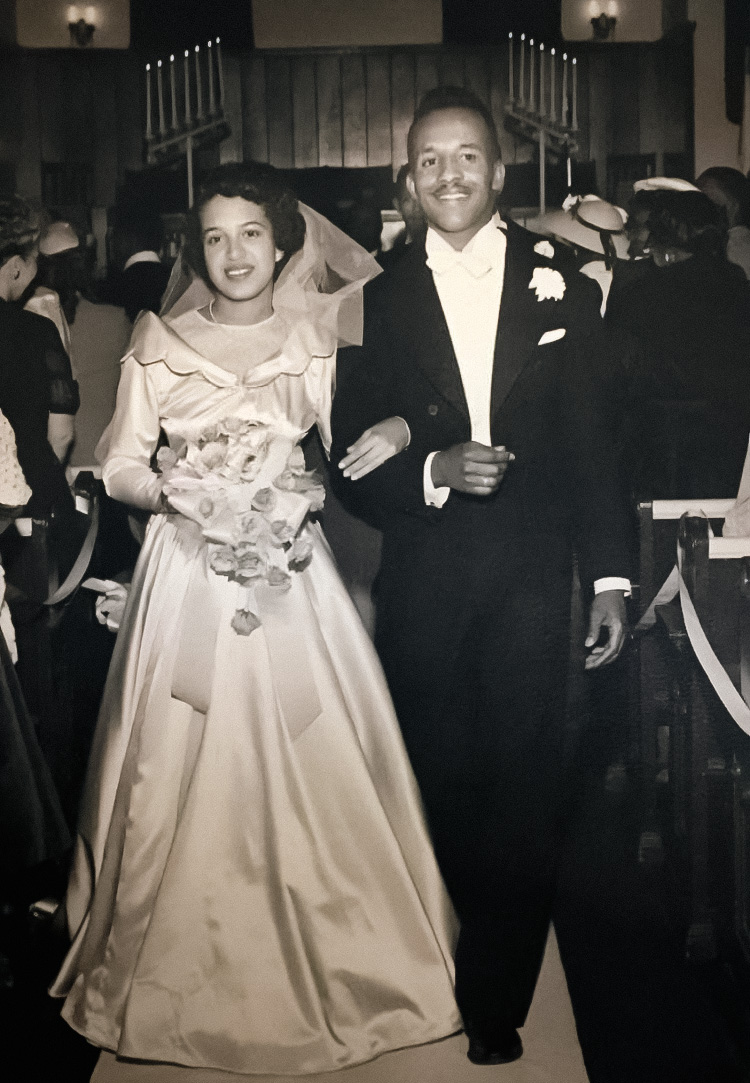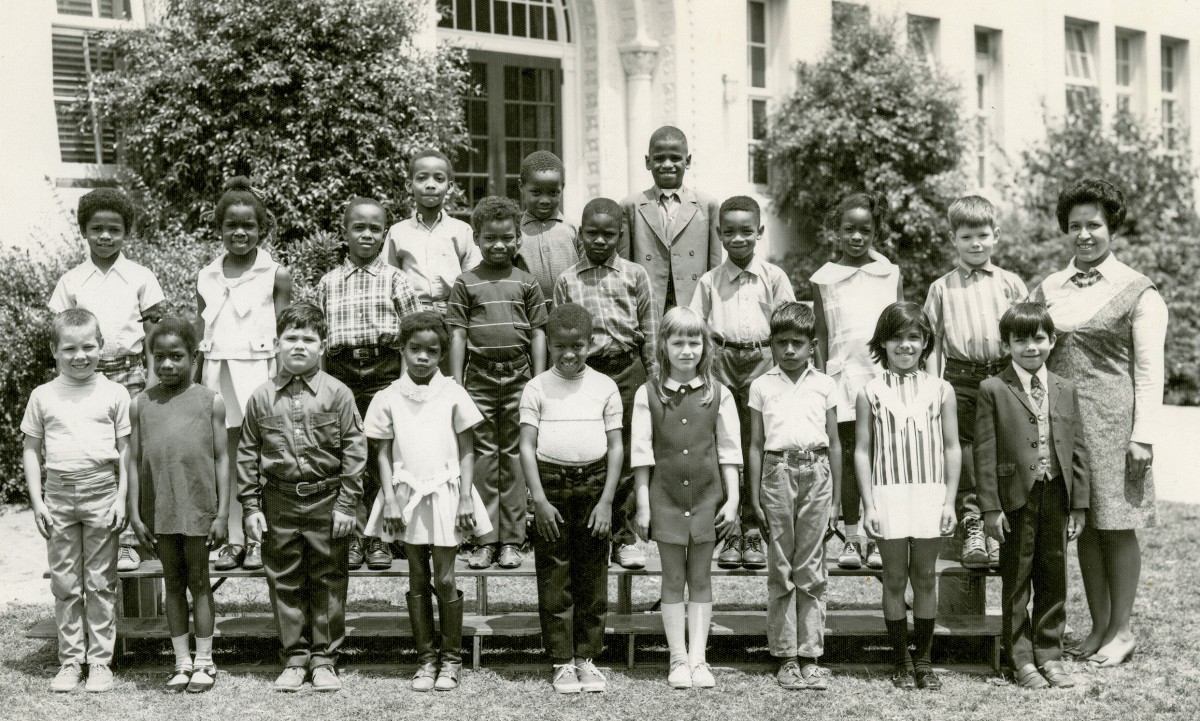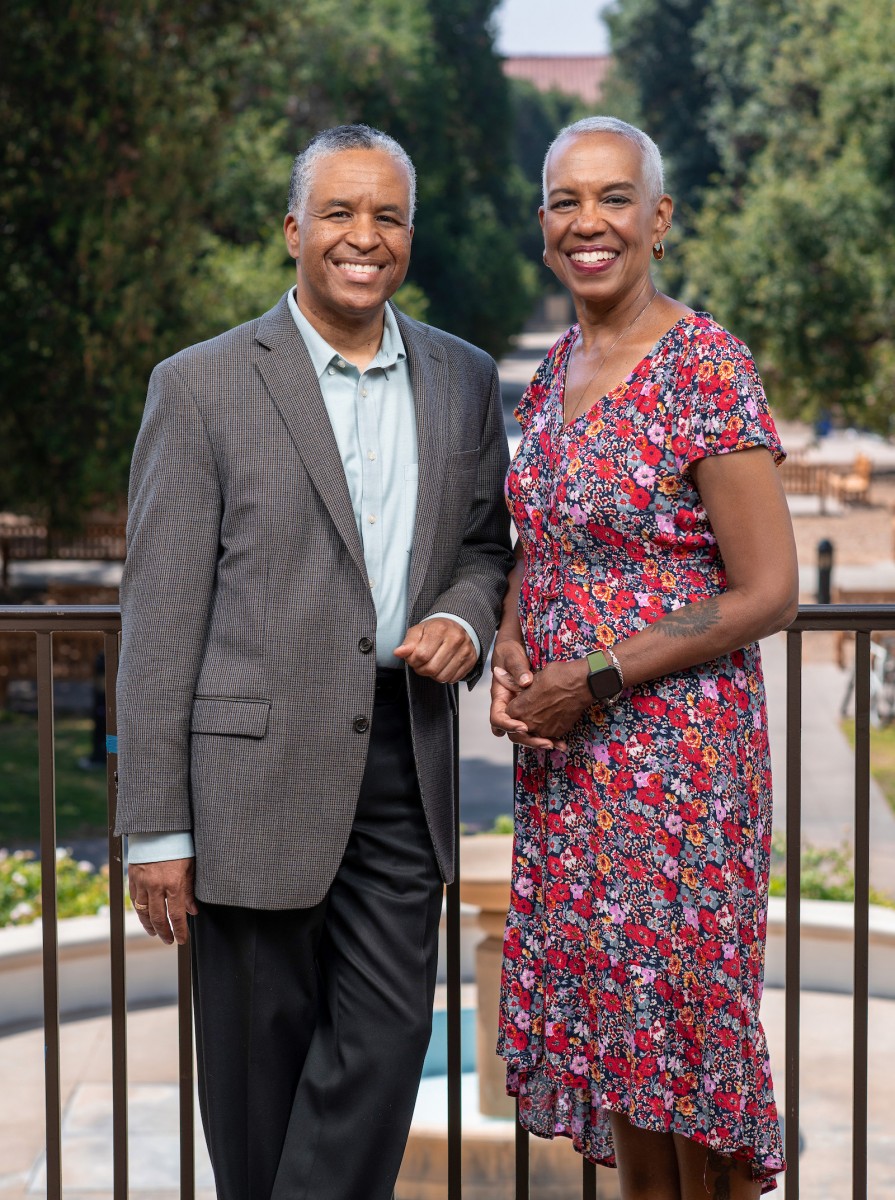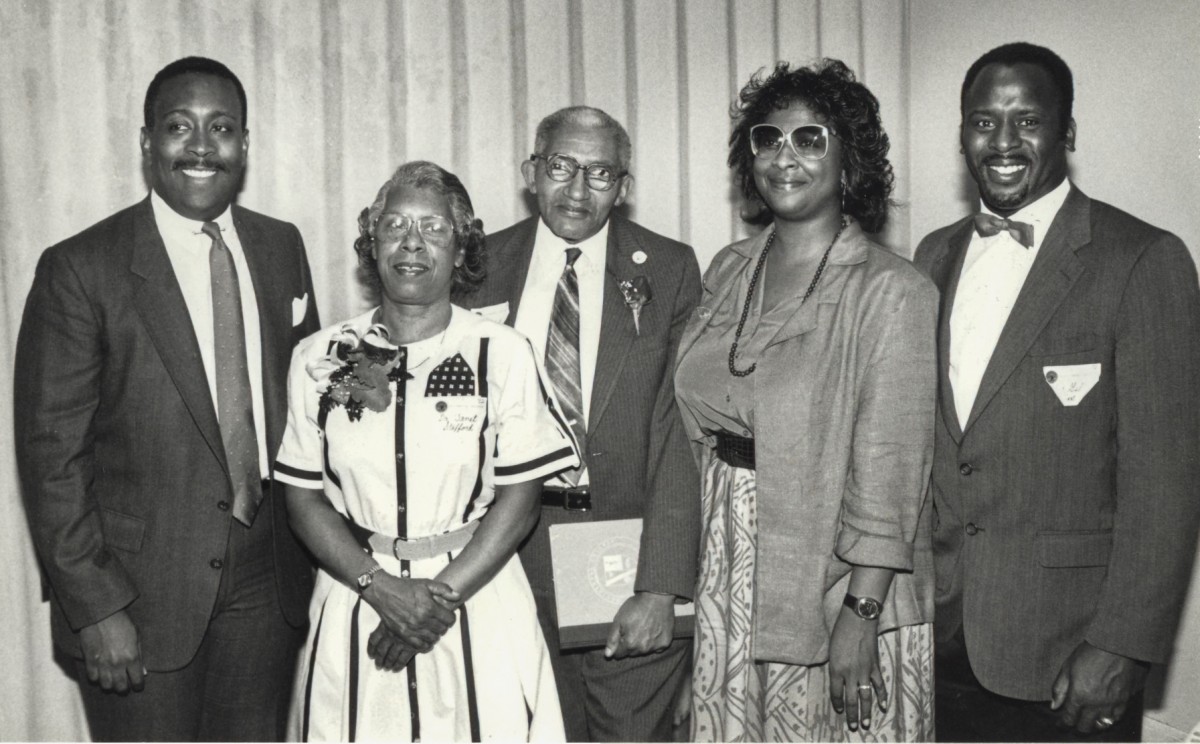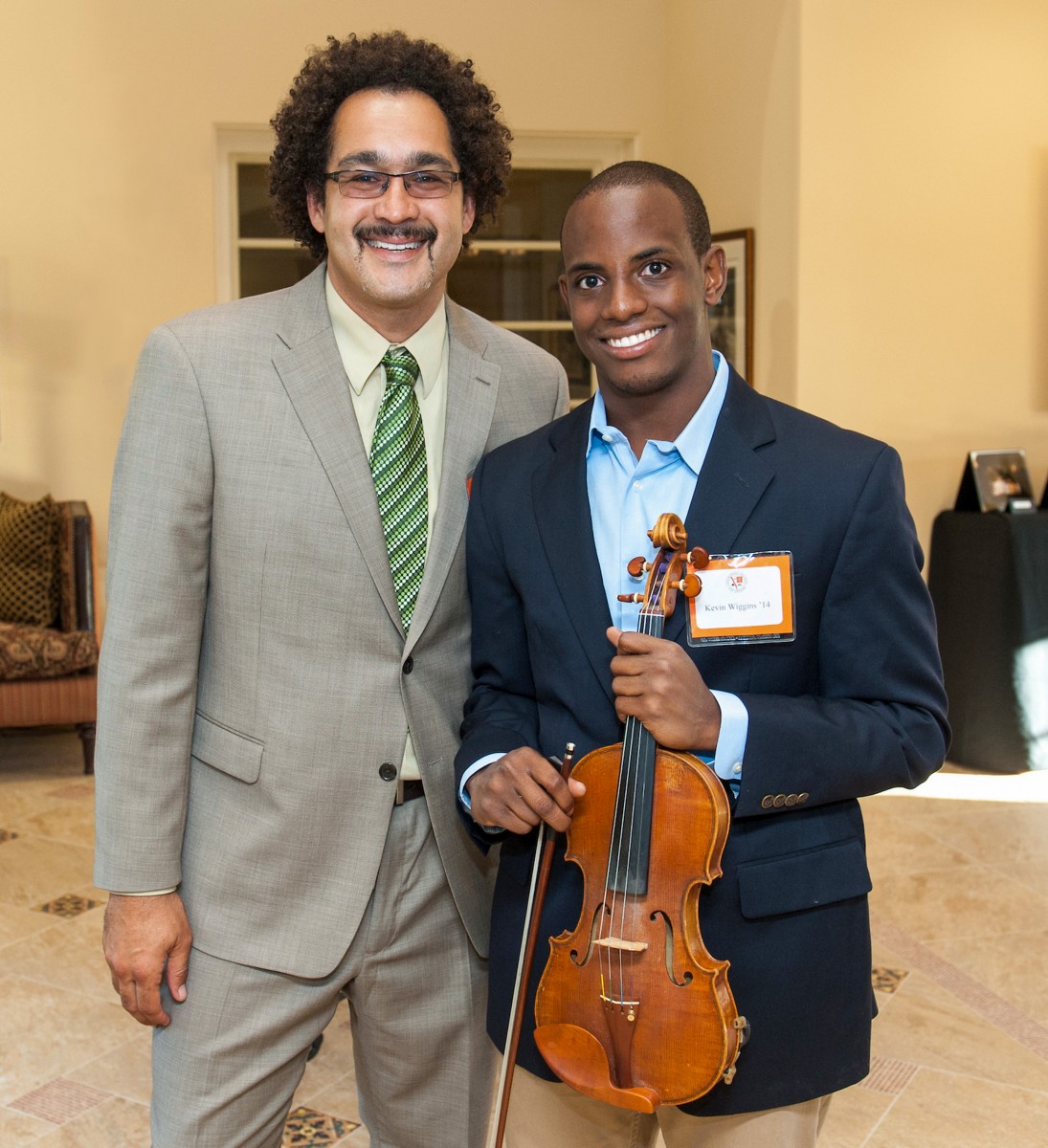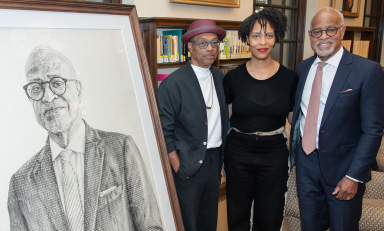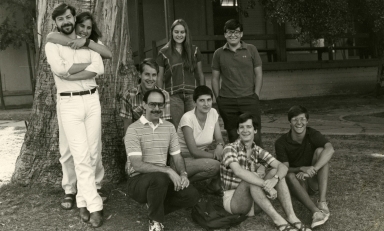Janet Stafford, George Ellison, and Barbara Bowman Wright made Oxy history as the College’s first Black graduates in 1952. What is their legacy?
Reflecting on her time at Oxy nearly 20 years after her graduation, Dr. Janet Stafford ’52 described the transition to college life in terms that didn’t sound much different than many of her classmates. “My chief problem was to get grades which were acceptable to me,” she wrote. “There was a generalized pursuit of excellence at Oxy—and I joined in the pursuit, doing better each year.”
Stafford entertained Oxy friends at her home, and went to showers and weddings of a number of her classmates. “I went to the barbecues, the football games, the track meets, and even the sorority houses for dinner,” she added. “I accepted the friendships as they came to me and I tried to be a friend in return.”
On June 9, 1952, Stafford became one of the first three African-Americans to graduate from Oxy. Each charted their own path to Oxy, and their quiet journeys overlapped only their junior and senior years. Their pioneering roles, little remarked upon at the time, weren’t fully recognized until 35 years later, when subsequent generations of the College’s Black alumni created an endowment fund to support scholars-in-residence named for Stafford, George Ellison ’52, and Barbara Bowman Wright ’52.
“As Black alumni, we believe that educational excellence can only be sustained by continued support to our institutions of higher learning,” the mission statement declared. “The creation of this endowment is our commitment to Occidental College.”
‘Committed and focused on his future’
Although Pedro Saenz Rocio, Oxy’s first Latino student, graduated in 1897 and Katsuji Akimoto, believed to be the College’s first Asian-American graduate, received his diploma in 1913, no Black students enrolled during the College’s first six decades. One of the few public acknowledgments of Oxy’s lack of diversity came in a 1939 editorial in The Occidental newspaper, titled “A Race Problem at Oxy?” The editorial noted that two years earlier a Black student had been discouraged from applying because of fears no one would room with him and “his social life would be unhappily circumscribed. … That such a thing can happen is an admission that Oxy has something of a race problem.”
The College’s efforts to create a more welcoming environment for all students, regardless of color, began in earnest following World War II. During an April 22, 1947, visit to campus, James Dombrowski—a Methodist pastor, civil rights activist, and executive director of the Southern Conference Educational Fund—listened to students’ demands that Occidental do more to integrate the student body. Ed Fry ’49 indicted the administration as being unwilling to press for the admittance of Black students, “because of the strong opposition of ‘small cliques,’” The Occidental reported. Patrick Strauss ’48 advocated for the creation of a joint administration-student committee to address the matter and work toward a “satisfactory solution.”
Dombrowski, in response, questioned whether a majority of Oxy students would put themselves out to make Black students feel welcome, “and especially if the fraternities and sororities would admit them as members,” the article noted.
The Quaker organization was looking to expand its operations following World War II, and Telluride Association alumnus Clarence “Mike” Yarrow, who would run Pasadena Branch from 1947 to its closing in 1952, secured an arrangement with Occidental for Telluride students to take all of their classes at Oxy. It aspired to be an urban version of a program that had run at Deep Springs College, which was started by Telluride Association founder and electricity tycoon L.L. Nunn, with job terms alternating with study terms.
Robert Richter ’50, an award-winning documentary filmmaker and two-time Oscar nominee, was the first to be accepted to the program. When he arrived in Pasadena in February 1947, classes started at Oxy a week later. Ellison arrived in Pasadena Branch in the summer of 1947 as a premed student and “was promptly put to work in a pottery factory,” according to a Telluride newsletter. “His interests are scientific and, at present, theological.” He began his Oxy studies during the fall term.
Pasadena Branch of Telluride Association continued its arrangement with Oxy for about two years, at which time it “decided to get its own faculty and became America’s smallest junior college,” Richter recalls from his home in New York. “I remember George as an affable, friendly, outgoing fellow who seemed to be committed and focused on his future.” After that first summer of classes, Ellison and another student, Al Wiese ’50, opted to return to Oxy in the fall of 1949 to continue their studies, with Ellison graduating in 1952 as a psychology major.
In 1953, President Arthur G. Coons (a 1920 graduate of Oxy) wrote a recommendation letter to McCormick Theological Seminary on behalf of Ellison, calling him “modest and unassuming” and praising his commitment to his values and the College. Ellison ultimately served in the Air Force for several years before enrolling in a master’s program at Teachers College, Columbia University, in 1958. Following his graduation in 1961, he went on to a decades-long career in special education.
‘Charm, character, and great ambition’
After Ellison quietly broke Oxy’s color barrier in 1947, a more concerted effort was underway to enroll the first College’s Black woman—namely, Stafford. Following World War II, a group calling itself the Eagle Rock Council for Civic Unity formed with the initial goal of helping displaced Japanese-Americans in returning to their homes in the Los Angeles area. An offshoot of the American Council for Race Relations, “The group also set forth to overcome the image of the Eagle Rock community as an all-white enclave,” Jean Paule writes in her 2003 biography of President Coons, and adopted the goal of raising funds to enable qualified Black students to attend Occidental.
With L.A. business leader Jerome MacNair (whose son and namesake graduated from Oxy in 1947) taking the lead, the group invited renowned poet Langston Hughes to speak at Thorne Hall, which in the decade since its opening had been a premium venue for speakers and entertainers—Bob Hope having headlined an “Occidental War Memorial Benefit” there in December 1947.While Hughes had spoken at Oxy nearly a decade earlier, Coons had his reservations about the writer and social activist, who was rumored to be not only Communist but anti-Christian after publishing a short poem titled “Goodbye, Christ” in 1931. Ultimately, Coons gave permission for the auditorium rental, while making it clear that the Council, and not Occidental, was sponsoring the event, which was scheduled for March 31, 1948.
Almost immediately, a faction of the College community protested Hughes’ visit, citing his anti-Christian verse and questioning his loyalty to the United States. President Coons brought the matter before a hastily assembled gathering of the Board of Trustees, which voted to cancel the rental on March 21—10 days before the event.
As Paule writes: “Coons then issued a statement which said in part that ‘it is the judgment of the trustees, with the concurrence of the President of the College, that it would be unwise, in the present state of international affairs and the resulting public alarm, for the College to allow the use of Thorne Hall for the public meeting by and for any group or speaker whose appearance may have markedly divisive social and political effect.’ ”
The American Civil Liberties Union blasted the decision, and from the other side, Sen. Jack B. Tenney—chairman of the California State Senate’s Un-American Activities Committee—protested Hughes’ scheduled appearance at Occidental one day after the event’s cancellation.
“Mr. Hughes’ writings were discussed generally,” Board President Frank N. Rush (a 1909 graduate of Oxy and vice president and general manager of the Southern California Telephone Co.) told the Los Angeles Times, “and the trustees present at an informal meeting apparently interpreted some of them as not particularly loyal—at least not in line with Occidental’s policy as a Christian college.”
Twenty-eight students signed a letter to the trustees protesting their decision. Al Perley ’49, writing to The Occidental newspaper, called the decision “a sad commentary on our times.” Alluding to Oxy’s recently announced $1.5 million fundraising campaign, he added, “If the College is hoping for bigger and better development funds, it should remember that the liberal support of the College cannot be so abused and discriminated against indefinitely.”
The council ultimately moved Hughes’ talk to Scott United Methodist Church in Pasadena (coincidentally, the home church of Barbara Bowman). On April 5, 1948, MacNair wrote to President Coons: “The Eagle Rock Council for Civic Unity was able to pay the expenses of the recent Langston Hughes lecture in full, and to have remaining in hand, from that source and gifts to the scholarship fund, about $200. How much better the results would have been, had the lecture been presented at Thorne Hall, it is impossible to estimate.
“I am personally hopeful that the College may be inclined to do something substantial for this cause,” MacNair continued. “Janet Stafford seems to be a very worthy candidate. Her scholastic achievement is a matter of record. She has charm, character, and great ambition to attend Occidental and eventually to study medicine. If in your judgment it is desirable to encourage racial integration on the Occidental campus, it seems to many of your friends that here is an excellent opportunity.”
A native of Los Angeles, Stafford lived with her parents and four brothers and sisters near Jefferson High School. Father George, a postal clerk, “struggled to give us a good home and a good life and—even looking back—it was a good life,” she reflected in 1971.
Stafford graduated in 1957 from College of Osteopathic Physicians and Surgeons and did a yearlong internship in Grand Rapids, Mich., before joining a practice in Huntington Park. After 18 months there, she returned to Grand Rapids, where she opened a general practice in 1960. She shared her talents on piano and organ with her church family at Smith Memorial Congregational United Church of Christ, which made a gift to the Oxy endowment fund in her honor in 1987. “Janet truly lives and practices her medical profession and Christian faith by being a loving and caring friend and inspiration to all,” wrote parishioner Evelyn Huyser.
In the early 1980s, the Smith Memorial congregation included Susannah Gast Delano ’01, who went on to enroll at Oxy as a women’s studies and gender studies major. Today she is executive director of Close the Gap California, a statewide campaign to achieve gender balance in the California Legislature by recruiting progressive women to run for political office.
“Dr. Jan,” as Delano knew her, was her pediatrician from age 1 to 6. Because her parents shared a single salary as co-ministers at the church, Stafford served as their personal physician at no charge. “I remember I really liked her,” Delano says of Stafford. “She set the level for doctors pretty high.”
‘There will never be another Barbara’
Graduating on June 9, 1952, wasn’t the only milestone for Barbara Bowman ’52 that week. Five days later, she married Howard Wright at Scott United Methodist. “She made her wedding dress and her bridesmaids’ dresses with the help of my grandmother—none of this going to David’s Bridal,” says daughter Sandra (Wright) Roberts ’76. “When she had her mind to do something, she was going to do it.”
Barbara was born in Bronxville, N.Y., the only child of Edmonia V. and Joseph Grant Bowman, who relocated from Halifax County, Virginia, to New York on the advice of Edmonia’s Aunt Rosa. They lived in separate quarters on the estate of a retired general, working as a housekeeper and a butler and “around-the-house guy,” Sheldon says.
The general’s respiratory condition, which required him to move to a warmer climate, led the family to relocate to Sierra Madre, bringing with him Barbara and her parents. Subsequently, Barbara went to Sierra Madre Middle School, Monrovia-Arcadia-Duarte High School, and then to John Muir Junior College and Occidental. She chose Oxy over UCLA (perhaps because Brentwood was too far away, and she was commuting to college from home).
A piano prodigy, Barbara began playing at age 3, “and I suspect that the general and his wife made certain appropriations for our mother because they recognized her talent,” Sheldon notes. She won a competition sponsored by J. Herbert Hall Jeweler in Pasadena as well as the Exchange Club of Pasadena Search for Talent contest. She also performed at the Pasadena Civic Auditorium and other venues in the San Gabriel Valley, and her talents were recognized by the Juilliard School in New York City, which offered her admission straight out of high school. She turned it down, Sandra says, because “she decided she wanted to get married”—two years before she met the man she would marry.
Born in Pittsburgh in 1924, Howard W. Wright went to Pasadena Junior College (which merged with John Muir Junior College to form Pasadena City College in 1954). He met Barbara at the same church where they were married two years later: “He told me the first time he saw her, he knew that she was the one,” Sandra says.
Marriage would have to wait, however, until Barbara finished her undergraduate studies. “She was a small-town girl and so I'm guessing that Oxy flowed with where she wanted to be," Sheldon says. “She wanted to get to the places where she wanted to be, but then she was comfortable to be in a small unobtrusive environment to apply her life—her husband, her children, her piano.”
A music major at Oxy, Barbara also was the accompanist for Howard Swan’s Glee Club. She made lifelong friends at Oxy, traveling after her retirement with a handful of her classmates—all of them white. “She was not concerned about the color of someone’s skin,” Sandra notes. “She was into her music and she felt music transcended all. That's why she really put her heart into it.”
Barbara taught in the Pasadena Unified School District for 19 years, starting in second grade before switching to kindergarten because “she saw that the second-graders were not up to the level that she felt they should be as far as learning,” Sandra says. “She taught them their address, their phone number—this, that, and the other. And then she was very communicative with the parents—even the Spanish-speaking ones.” (In addition to learning Spanish, Barbara completed a certification from USC for ESL instruction in 1979.)When she transferred to Oxy from Pasadena Nazarene College in the fall of 1974, Sandra became the College’s first legacy Black student. How did she wind up coming to Occidental? “My mother, of course,” Sandra says with a smile. “She was friends with the registrar, Carolyn Ayars, so she had me come over and meet her. She let me live on campus but I came home every weekend. But I liked Oxy.”
Barbara’s love for the piano persisted throughout her life, and she even played grandson Evan’s electronic keyboard in later years, much to her son’s delight. “Our mother's piano skills leapfrogged right over me into my son, Evan,” Sheldon says. “And my daughter, Alison, has our mother's wit. She's definitely her grandmother's granddaughter.”
“Alison is also her grandmother’s only granddaughter,” adds Sandra, who has three sons of her own (Chris, Morgan, and Grant) and 10 grandchildren.
From talking with her children, the picture that emerges of Wright is a woman who held fast to her beliefs and was unafraid to share her opinions. “She was the queen, and I mean that in a loving fashion,” says Sandra, who majored in an independent field of study and heeded her mother’s advice to obtain a teaching degree. “She could be a pistol. There will never be another Barbara.”
The legacy of Ellison, Stafford, and Wright
Even as the College’s fortunes rose under President Coons’ leadership, Oxy made little headway toward a more diverse campus over the next decade. Following the milestone 1952 Commencement ceremony, only seven more Black students had graduated from Oxy by 1963.
In the late 1950s, according to Paule, Director of Admission Arthur S. Marmaduke ’50 (who went on to serve as executive director of the California Student Aid Commission from 1960 to 1985), and his assistant, Glenn P. Smith ’50 M’52, “took it upon themselves to visit schools in the South Central part of Los Angeles in the effort to identify students who could meet Occidental’s admission standards and to encourage them to apply. An associate superintendent of Los Angeles schools later told Marmaduke that Occidental was the first college to recruit African-American students from his area.”
While the Eagle Rock Council for Civic Unity provided scholarship support to a number of other minority students before disbanding in 1961, the College needed to step up its financial aid efforts. To this end Coons pledged $16,000 toward minority scholarships—at a time when tuition, room and board, and fees was about $1,800 a year. However well-intentioned, this effort barely moved the needle.
In the fall of 1963, 14 African-American students, including nine first-years, were enrolled at Oxy—approximately 1 percent of the student body. (The administration was even less diverse: In 1963, Oxy had one Black employee, a man on the plant staff, and none in an administrative or teaching role.)
Toward the end of Coons’ presidency, Occidental received a tremendous boost to its diversity efforts when the Rockefeller Foundation granted $275,000 toward a three-year trial program to “increase the discovery” of disadvantaged students from minority groups. The grant was the result of a joint proposal to the Rockefeller Foundation by Coons and the presidents of Antioch, Grinnell, Reed, and Swarthmore. By the second year of the grant, 1965-66, 25 African-Americans and 17 Latinos were enrolled out of a student body of 1,510, or 2.8 percent.
Among the beneficiaries of the Rockefeller grant was J. Eugene Grigsby III ’66, retired UCLA professor and CEO of the National Health Foundation and a longtime trustee of the College. Grigsby grew up in Phoenix and attended a high school whose enrollment—roughly four times the size of Oxy’s—was among the most diverse in Arizona. “I had a family friend who went to Occidental,” Grigsby recalled in a 2012 OxyCorps interview, “and he was a friend of the dean of admission.” The dean wrote Grigsby an unsolicited letter with an offer of admission, including financial aid. “I had never heard of Occidental, never been to Occidental, and it was the absolute last place I would have thought about going,” he admitted. Grigsby was one of two African-Americans to enter Oxy that fall.
The fund was announced on March 31, 1987, with a reception and dinner at Oxy’s Faculty Club, with the three namesake alumni in attendance. It was likely their first reunion since graduating from Oxy, given that Stafford had called Grand Rapids home since 1960 and Ellison was living and working in New York City.
In 1998, at the request of President John Brooks Slaughter, Stafford represented Occidental as a delegate to the inauguration of Albion College President Peter T. Mitchell in Michigan. She died in 2005 from cancer, with Wright and Ellison passing away within nine months of each other in 2008.
In the decade since, Oxy has hosted an additional nine “incredible scholars in residence: Alondra Nelson, Cathy Cohen, Dorothy Roberts, Kiese Laymon, Keeanga-Yamahtta Taylor, Chanda Prescod-Weinstein, C. Riley Snorton, Keisha Blain, and Justin Dunnavant,” notes Regina Freer, professor of politics, who oversees the program. “This list includes folks who went on to win MacArthur ‘genius’ grants, to serve in the White House, and to win the Carnegie Medal for Excellence in Nonfiction. This visit has become the premier event on campus and we all look forward to it all year.”
The spirit of the endowment reflects the sentiments of Stafford when she graduated from Oxy 70 years ago. “While receiving a formal education has been of great importance, my scholarly achievements have been modest,” she wrote to President Coons in 1952. “But in the opportunity for friendship, I feel I have made great strides. … Friendship is diluted often by time and geography—but I feel that Occidental has made a place for me, and I am certain I have made a place for her.”
Top photo: A wall drawing of Janet Stafford was created by artist Kenturah Davis '02 as part of the Oxy125 celebration in 2012.

